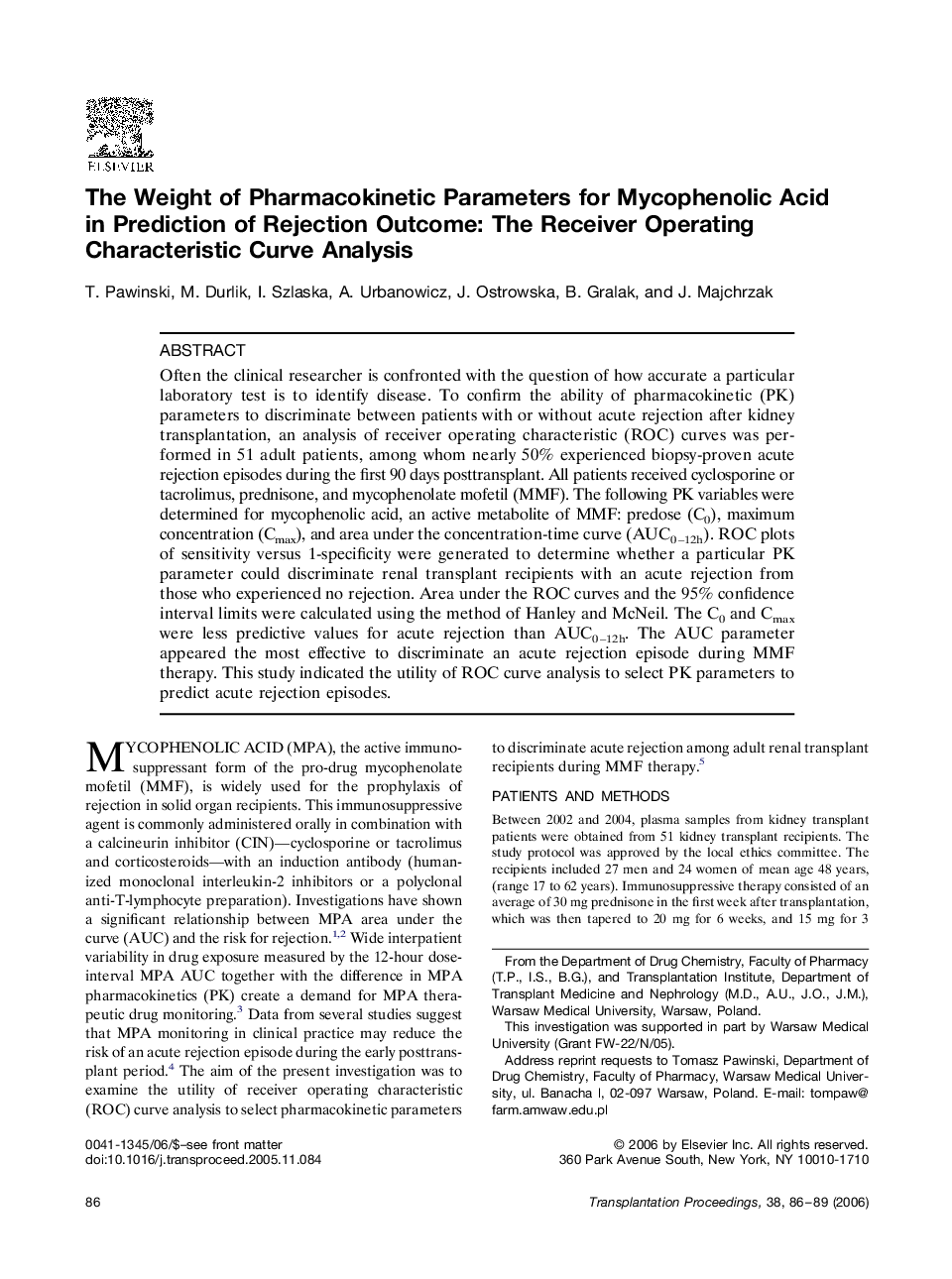| Article ID | Journal | Published Year | Pages | File Type |
|---|---|---|---|---|
| 4261786 | Transplantation Proceedings | 2006 | 4 Pages |
Often the clinical researcher is confronted with the question of how accurate a particular laboratory test is to identify disease. To confirm the ability of pharmacokinetic (PK) parameters to discriminate between patients with or without acute rejection after kidney transplantation, an analysis of receiver operating characteristic (ROC) curves was performed in 51 adult patients, among whom nearly 50% experienced biopsy-proven acute rejection episodes during the first 90 days posttransplant. All patients received cyclosporine or tacrolimus, prednisone, and mycophenolate mofetil (MMF). The following PK variables were determined for mycophenolic acid, an active metabolite of MMF: predose (C0), maximum concentration (Cmax), and area under the concentration-time curve (AUC0–12h). ROC plots of sensitivity versus 1-specificity were generated to determine whether a particular PK parameter could discriminate renal transplant recipients with an acute rejection from those who experienced no rejection. Area under the ROC curves and the 95% confidence interval limits were calculated using the method of Hanley and McNeil. The C0 and Cmax were less predictive values for acute rejection than AUC0–12h. The AUC parameter appeared the most effective to discriminate an acute rejection episode during MMF therapy. This study indicated the utility of ROC curve analysis to select PK parameters to predict acute rejection episodes.
